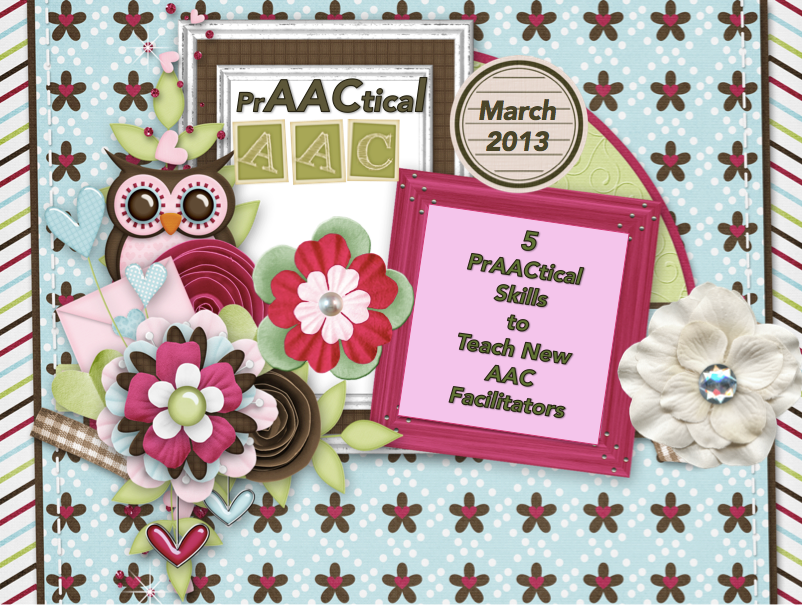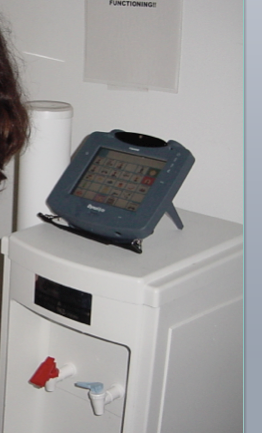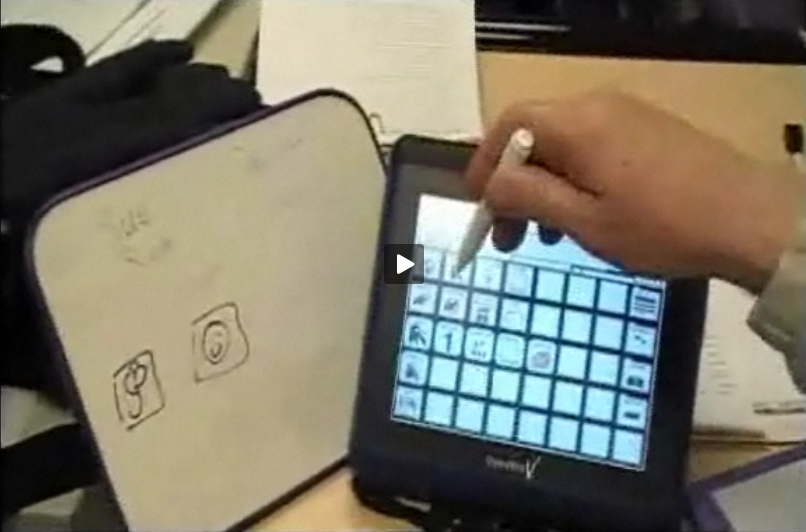5 PrAACtical Skills to Teach New AAC Facilitators

We have been out and about in our community these past couple of weeks. We have worked with speech-language pathologists, teachers, resource specialists, paraprofessionals, and families. We love doing AAC facilitator training because the impact is so important for not only our current AAC learners but for future AAC learners as well. There are really great professionals who want to provide the best AAC support possible. They want and need AAC information that will help them integrate AAC facilitation strategies into their already very busy days. Here are 5 AAC facilitation strategies that have made the most impact:
- Using Aided Language Input (ALI)– Talk AAC to the learner. This strategy is not only a very powerful teaching tool, but when discussed with new AAC facilitators, seems to make perfect sense (many have never heard of it). One key for learning ALI is to practice it in a variety of activities so that it becomes habit. Once there is a level of comfort and naturalness with it, ALI becomes almost impossible not to do it. You know ALI has become habit when an AAC facilitator starts explaining about a communication exchange and begins pointing to a real or imaginary communication display when they are telling what happened. More on Aided Language Input.
- Having the AAC device/app/display with the learner at all times– This seems like common sense but we have worked with great people who facilitate using AAC all the time in the classroom but then have the student leave it when they head to ‘gym’ or ‘assembly’, or even ‘lunch’ sometimes. It may seem common sense to not do this but it is not because many new and good AAC facilitators have said ‘ oh I never thought of sending it out’. We often print out this AAC resource from Boardmaker Share and attach it to communication devices- AAC It’s as Easy as 1,2,3

- Using Core Words on AAC Displays-The concept of core words is new for many AAC facilitators but very important because these are the words that will be modeled to the learner. Explaining and showing how working about core words, helps new AAC facilitators understand how to facilitate pivotal communication exchanges. Check out the now ‘famous’ video Language Stealers to easily visualize core words.
- Using High Tech and Low Tech Communication Systems- We all use a combination of low to high tech communication platforms (writing, smart phones, computers, tablets, etc.) yet often it is thought that a no -tech support is ‘less advanced’ than a high tech support. It is important to teach new AAC facilitators that one is not better or more advanced than another but place and time often dictate the best option (oh yeah and tech failure).
- Providing Appropriate Reinforcement/Feedback- It is important to reinforce an AAC user based on how they express themselves (great way to say that, wow that was descriptive) not on their physical behavior (pointing, showing, etc). The most natural reinforcement is responding appropriately to the message that is conveyed with AAC (i.e., give the requested item, make a comment, expand a topic). However, sometimes more specific reinforcement can be helpful for an AAC user who has metalinguistic awareness. At these times, it is helpful to reinforce the types of communication that are related to the AAC goals. Check out these previous posts on this topic: 5 Nice Things to Say to Students Who Use AAC, F is for Feedback, & Visualize 9 Nice Things to Say to AAC Users
Filed under: PrAACtical Thinking
Tagged With: AAC Teaching Strategies
This post was written by Robin Parker




4 Comments
Such great information!
Thanks Deb! Appreciate that you are taking the time to read because I know how many teachers and students you impact. Thank you!
One of my colleagues found one of your articles on a web server that she has and forwarded to me. The articles that you have here are really well written and practical
THANKYOU
We really appreciate that feedback, Ann-Maree. We try to write the blog that we would have loved to read earlier in our careers. We’re all about keeping things real and prAACtical. Thanks again for stopping by to comment.